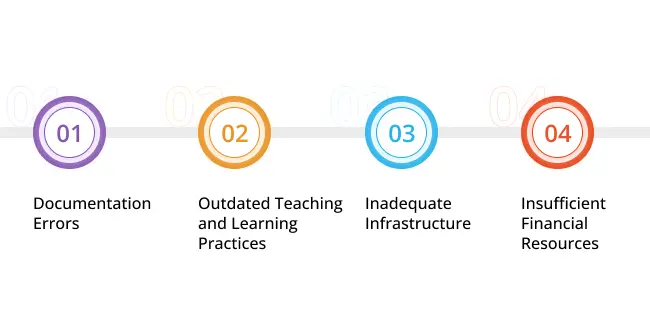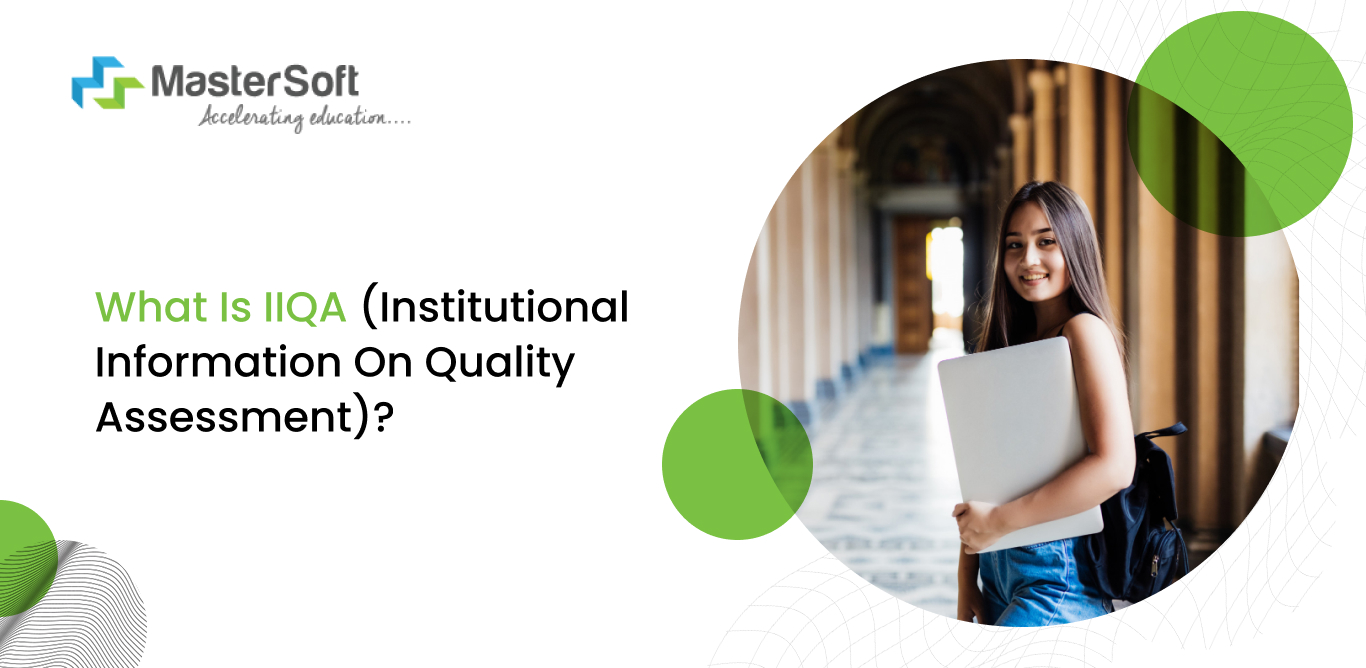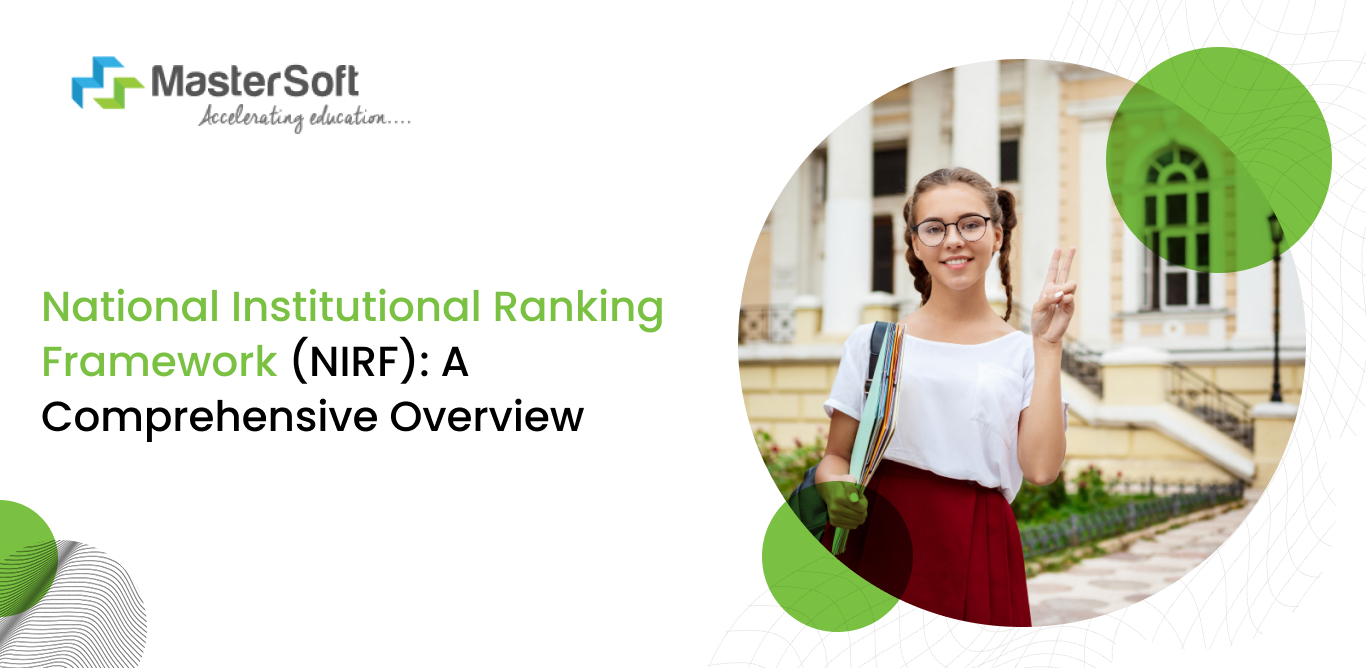12, August 2024
Institutes aim to progress and expand while ensuring excellent education, student support systems, and organisational efficiency. Nevertheless, streamlining multiple core operations and maintaining education quality can be challenging.
That is why the accreditation process is a significant procedure, encouraging educational institutes to adhere to guidelines. Completing the IIQA process of the NAAC accreditation process is a primary and initial step.
What is IIQA?
IIQA stands for Institutional Information for Quality Assessment and is the first step in the NAAC accreditation process. In fact, after filling out the IIQA form, the particular institute receives its acceptance within a week. Then, the institutes have forty-five days within which they must submit the self-study report (SSR).
The purpose of IIQA lies in determining whether a higher educational institute is eligible for accreditation. Furthermore, it ascertains whether the institute fits the criteria for a comprehensive assessment by NAAC.
Furthermore, the information that institutes fill out on the IIQA form provides the foundation for the Self-Study Report (SSR). In fact, it is a detailed profile that contains comprehensive information about the institute, including teachers, students, programmes, important cells, and committees.
Therefore, leveraging tools like the student management system comes in handy in such scenarios as it streamlines crucial information. Institutes can rely on the system to collect and corroborate crucial data and fill out the form accordingly.
How Can Institutes Optimize Student Management With MasterSoft's SIS System?
Components of the IIQA Form
The basic and general information about the higher education system (HEIs) is the same across the board, with some changes depending on the institution type. NAAC mentions that the IIQA profile information should have the following data:
- Dates of previous cycles (if accredited earlier) with grade
- Previously accredited HEIs must be careful and check if they have submitted their Annual Quality Assurance Report (AQAR).
- The correct name of the institution, date of establishment, independent campus or not, complete address with mobile number, landline number, fax, registered email ID, and alternate email ID.
- Designation and details of the Head of Institution
- Alternate faculty details: salutation, name, and designation
- Website of HEI
- Nature of college: affiliated, constituent, government, private, autonomous, and name of affiliated university.
- UGC 2f recognition and UGC 12B recognition proof.
- If the institute has attained the centre of excellence and recognition as potential for excellence, they need to provide adequate proof.
- If the institution is not affiliated with a university and is offering programmes recognised by any Statutory Regulatory Authorities (SRA).
- Date of uploading data on the MHRD website for AISHE and the latest certificate issued by the Head of Institution for complying with the Central Government, UGC, and other Statutory Bodies, State Government, Affiliating University, and other applicable SRA.
How Can Colleges Be Prepared For NAAC Peer Team Visit?
Eligibility Criteria for Institutions
Higher education institutions (HEIs) can apply to the NAAC for the Assessment and Accreditation (A&A) process if they have graduated at least two batches of students or have been in operation for six years, whichever comes first.
Institute Types
State, central, private, and deemed-to-be universities and colleges are eligible for accreditation.
Geographic Location
Institutes should be within the regions and states of India.
Recognition
Institutes that have been recognised by autonomous bodies, colleges, and universities are eligible for accreditation.
Preparation for the IIQA Submission
Higher education institutes must go through the NAAC website to understand the eligibility criteria and then start the registration process. They need to access their HEI portal through their mail ID and password and go through the following process:
- The first step is to log in to the portal.
- Fill out the IIQA form with all the accurate information.
- Deposit the fee online.
- Submit all the necessary documents in the correct format.
- The NAAC committee verifies documents and informs the HEIs for further processing.

Common Challenges and Solutions for a Successful IIQA Submission and Accreditation Process
The University Grants Commission (UGC) established the National Assessment and Accreditation Council (NAAC) to accredit higher educational institutes in India. Besides, NAAC provides a benchmark for institutes to attain quality education. However, institutes might face a few common challenges, which are as follows:
Documentation Errors
The documentation of NAAC is complex, as it entails collecting and organising immense amounts of data. Manually sorting through files of data and records is a time-consuming process.
Thankfully, they can utilise a student management system to store and organise all student-related documents, including assessments and academic reports. In effect, they can complete the documentation process for IIQA successfully.
On the other hand, they can streamline other documents, like audit and self-assessment reports, with ERP software.
Outdated Teaching and Learning Practices
Educational or teaching/learning practices are among the fundamental criteria that NAAC assesses, and institutes must have the prerequisites. Outdated teaching and learning practices lead to unfulfilled learning outcomes.
Hence, the solution lies in hiring qualified faculty and mandating the implementation of innovative instructional methods. Also, the institute's management must monitor and evaluate the faculty's performance with the help of advanced technology.
In addition, institutes can conduct continuous professional development programmes, enabling teachers to improve their skills and capabilities. Consequently, teachers will be able to learn new strategies and employ them in the class as per the learning requirements.
Inadequate Infrastructure
Inadequate infrastructure, such as poorly maintained classrooms, dilapidated computers, and sports facilities, poses a major obstacle to attaining accreditation. Hence, adopting the necessary technological assistance to upgrade the institute system is the need of the hour.
For example, many advanced tools have asset management modules, allowing institutes to track classrooms, laboratories, libraries, and sports facilities.
Insufficient Financial Resources
An institute's ability to invest in infrastructure and innovative initiatives for its growth is a crucial factor to consider. Insufficient funds and financial resources can impede an institute’s efforts to facilitate significant institutional activities.
Therefore, institutes must find sponsors and collaborate with other institutes to conduct research and academic activities. Also, NAAC assesses an institute’s financial resources and its sources of revenue generation.
The Role of Self-Study Report
The self-study report (SSR) forms the foundation for the comprehensive process of accreditation and provides in-depth information about the institute. Therefore, institutes must include the following details carefully:
- Executive Summary
- Profile of the Institution
- Extended Profile of the Institution
- Quality Indicator Framework (QIF)
- Evaluative Report of the Departments
- Data Templates and Documents (Quantitative Metrics)
Furthermore, the executive summary must include a brief note on strengths, weaknesses, opportunities, and challenges (SWOC) with respect to the institution.
What happens after submitting IIQA?
After completing the IIQA form, filling out the formalities, and submitting it to the NAAC, the latter will review the form and details and may ask for further clarification. Furthermore, NAAC can accept or reject IIQA, depending on the predetermined criteria.
Nevertheless, the accreditation organisation will provide specific suggestions, depending on which they can resubmit the IIQA form. They will also have two chances to submit the form with the necessary documents within one year.
If NAAC accepts the IIQA, institutes need to fill out the SSR form and complete the self-study report formality. They need to upload mandatory documents and pay the first installment fee online. However, institutes must submit their IIQA form early, allowing them to complete their SSR submission within the same time period.
When NAAC receives the SSR, it decides and plans for a visit date and develops teams to visit the institution within three weeks. Also, the visit usually takes one month to complete, after which NAAC announces institutional grading.
Final Word
All institutes want credibility, recognition, and appreciation, and NAAC accreditation ensures that they fulfil their academic aims. However, before investing time, effort, and money in the process, it is best for institutes to check their eligibility.
That is exactly why IIQA is a significant procedure for institutes, as it helps to ensure the eligibility criteria for the accreditation process. Moreover, it ensures that the applicant institution fulfils the mandatory requirements of the accrediting organisation.
Simplify your faculty hiring process with MasterSoft’s faculty management system.
Mobile: 08448010216
Email: janki.somani@iitms.co.in











